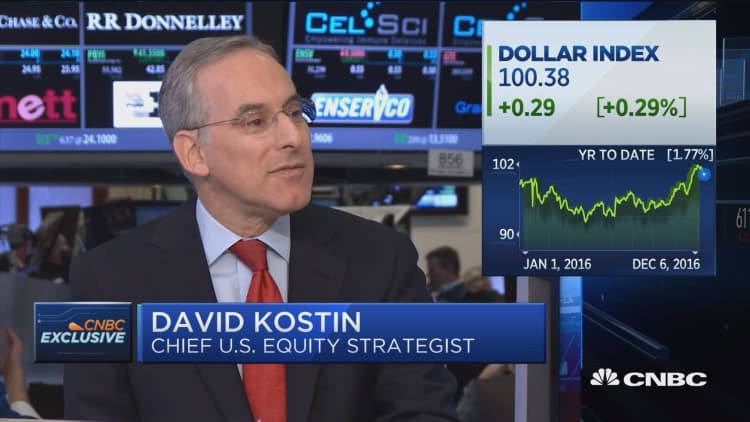
November's election results helped trigger a record-setting month for exchange-traded funds.
Republican Donald Trump's victory coincided with investors making heavy bets that U.S.-focused stocks would rise, as the move up in the market coincided with still more cash pouring in. When it all was over, ETFs saw a whopping $49.1 billion in inflows, the highest monthly total ever in records going back to 1998, according to State Street Global Advisors.
"While the jury is clearly still out on President-elect Trump's decree to make America great again, as he has yet to take office, the post-election fervor has certainly made U.S.-based fund flows great again," State Street said in a statement.
Investors were caught off guard by Trump's victory, and many Wall Street strategists predicted that if he prevailed over Democrat Hillary Clinton, the market would head into a tailspin of 5 percent or more.
Just the opposite happened.
From the Nov. 4 low to the Nov. 25 high, the jumped 6.2 percent. For the month, the market gauge gained 3.3 percent.
Flows to stocks dwarfed other asset classes, with bonds seeing a healthy month for inflows despite losing what State Street estimated to be $1.7 trillion in market value. Commodities got clobbered amid a rising dollar, which makes products priced in the U.S. currency more expensive.
Bond funds overall have had a big year, pulling in a record total despite rising yields that otherwise tend to scare off fixed income investors. Rising yields come with falling prices, which hurt values of bond funds.
ETF Flows
| Asset Class | November ($M) | Year to Date ($M) |
|---|---|---|
| Equity | 49,115 | 122,527 |
| Fixed Income | 2,792 | 84,849 |
| Commodity | -3,077 | 14,614 |
| Mixed | 100 | 532 |
| Alternative | -3 | 85 |
| Speciality | -395 | 467 |
Source: Source: State Street Global Advisors, Bloomberg Finance
The surge in flows was fairly broad-based, with 8 of the 11 S&P 500 sectors showing positive moves. Red-hot financials led the way with $8.4 billion, while industrials were second with $4.7 billion. The biggest outflows came from consumer staples at $1.5 billion and real estate, with $1.1 billion.
More broadly, U.S.-centric funds also dominated flows, taking in $49.2 billion. International funds focused on single countries attracted $933 million, while global funds brought in $816 million.
The big losers were one of 2015's hottest trades — ETFs that hedged against currency shifts. They saw $828 million in outflows, bringing year-to-date redemptions to $23.4 billion.
"Rotations of all sorts ensued post-election, and some have persisted into month-end as investors have begun to coalesce around the idea of monetary policy handing the baton to fiscal policy — of which those policies are expected to be pro-growth, pro-spending, and, as proposed, protectionist," State Street said. "Welcome to the New Abnormal."
ETFs track indexes and differ from mutual funds in that they can be traded like stocks and typically carry much lower fees. They've become an increasingly popular vehicle for investors, with assets swelling to nearly $3.4 trillion globally, more than double where they were five years ago, according to BlackRock.
While ETFs have been raking in the cash, November was brutal for mutual funds. U.S. equity mutual funds, which have about $6.3 trillion in total assets, saw $35.7 billion in outflows, the worst month since October 2008, according to market data tracker TrimTabs. The group has seen 21 straight months of outflows.
Overall, the passive strategies that most ETFs employ are pulling in dramatically more investor cash than mutual funds, which mostly use active management stock-picking techniques. Through October, Morningstar reports that active U.S. equity mutual funds saw $248.5 billion in outflows over the past year, while passive strategies pulled in $191.2 billion.





